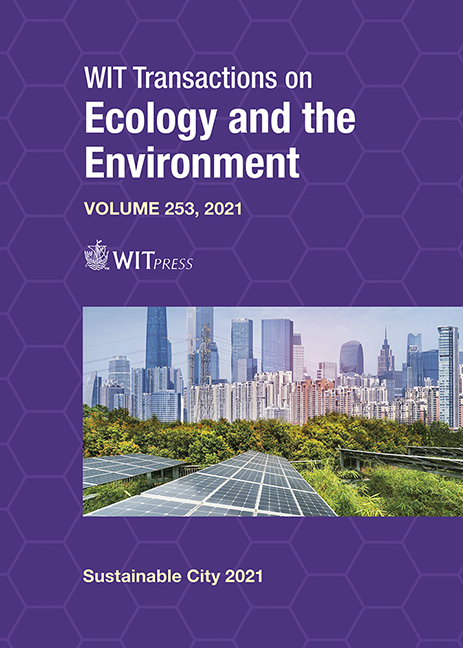INFLUENCING FACTORS ON COOLING DEMAND OF HIGH-RISE BUILDINGS IN HOT/HUMID CLIMATES: A REVIEW
Price
Free (open access)
Transaction
Volume
253
Pages
11
Page Range
423 - 433
Published
2021
Size
978 kb
Paper DOI
10.2495/SC210351
Copyright
Author(s)
BARA ANAYA, DANLIN HOU, IBRAHIM HASSAN, LIANGZHU (LEON) WANG, AZIZ RAHMAN
Abstract
A significant amount of energy is consumed on cooling buildings in countries that experience hot/humid climates. The increasing demand for high-rise buildings, with their inherent air conditioning systems, adds extra requirements to electricity grids or local district cooling systems. Thus, this work is structured to identify the influencing factors of cooling energy demand in high-rise buildings that are geographically restricted to countries of these climates. The influence of the factor is quantified as its contribution to cooling energy savings when manipulated or optimized. It is found that the average annual cooling reductions are 12%, 24.7%, 18.3%, and 20% with ranges of 3%–27%, 2.6%–60%, 5.6%–30%, and 11%–29% for building typology, envelope, system, and operation factors, respectively. Environmental factors lack quantification in the literature, although they are considered, however their effect is not quantified. In general, most studies considered building typology and building envelope factors which are related to building design, while few studies considered building operation and building system factors. The aforementioned factors and their importance lead to suggestions of conducting more studies on building operational and building system factors as they significantly contribute in cooling energy savings. Since Urban Heat Island (UHI) can cause a change of a city’s microclimate which may double the cooling demand, it is listed as one of the essential environmental factors. This review has shown various aspects that are vital in studying building cooling load demand and its related energy performance.
Keywords
cooling load, building energy, high-rise building, humid climate, hot climate, building cooling, high-rise building energy, cooling demand, cooling influencing factors, energy demand





